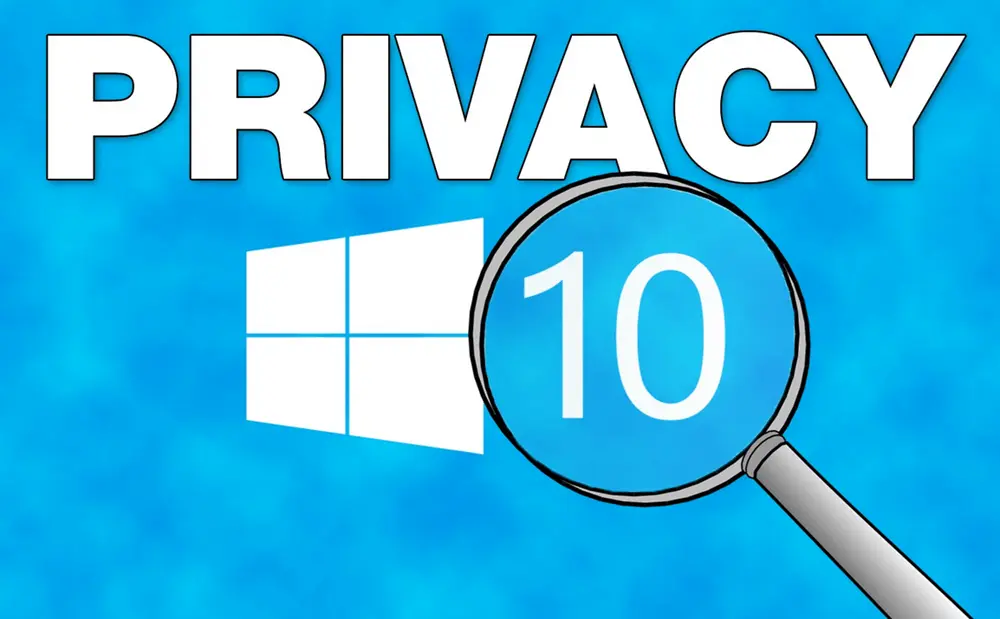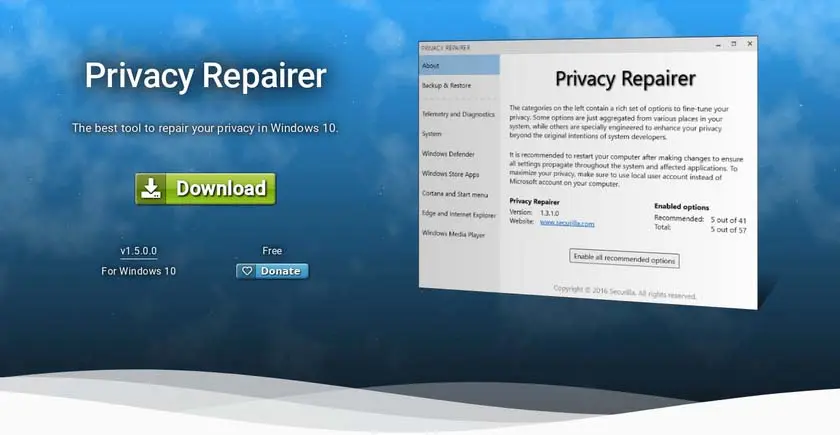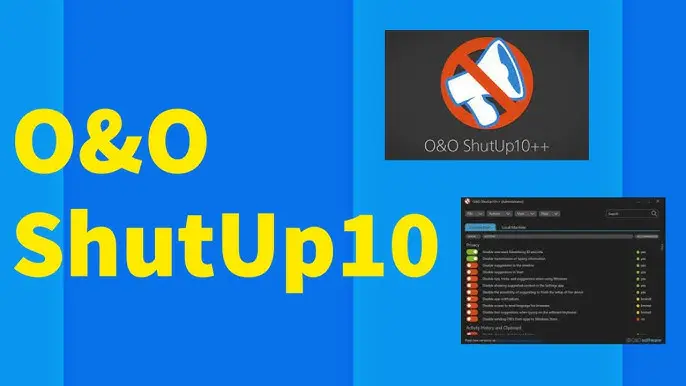Windows 10 Privacy Tools generally refer to a variety of software and settings that users can employ to enhance their privacy and control the data collected by the Windows 10 operating system. Windows 10, like many modern operating systems, collects data for various purposes, including improving user experience, providing personalized services, and enhancing system performance. However, some users may be concerned about the extent of data collection and may want to take measures to safeguard their privacy.

Windows 10 Privacy Tools can include
- Privacy Settings: Windows 10 has a range of privacy settings that users can configure to control the information shared with Microsoft. This includes settings for location, speech recognition, advertising ID, and more.
- Group Policy Editor: Advanced users can use the Group Policy Editor to configure a wide range of settings related to privacy and data collection.
- Registry Tweaks: Some users may choose to modify the Windows Registry to change specific settings related to privacy and data collection.
- Third-Party Privacy Tools: Several third-party applications and tools are designed to enhance privacy on Windows 10. These tools can provide a user-friendly interface for adjusting various privacy settings.
- Firewalls and Antivirus Software: In addition to Windows-specific tools, users can use third-party firewalls and antivirus software to control network traffic and enhance overall system security.
It’s important to note that while windows 10 privacy tools can provide additional control over certain aspects of privacy, they should be used with caution. Modifying settings or using third-party tools can have unintended consequences and may affect the normal functioning of the operating system. Users should carefully review the functionality of any privacy tool and ensure that it comes from a reputable source before using it.
Best Windows 10 Privacy Tools in 2023
1. WPD (Windows Privacy Dashboard)

If “Windows Privacy Dashboard” is a tool or feature that has been introduced after my last update, For the most precise and recent information, I advise consulting the official Microsoft literature or the Windows settings on your device.
In general, Microsoft has incorporated various privacy settings in Windows that allow users to control the information shared with the company and third-party applications. This includes options to manage location settings, telemetry data, and app permissions. If “Windows Privacy Dashboard” is a new addition, it likely provides a centralized interface for users to review and manage these privacy settings in a more user-friendly manner.
2. Blackbird

Blackbird can refer to various things depending on the context. Here are a few possibilities:
- Bird Species: A blackbird is a type of bird belonging to the family Turdidae. There are several species of blackbirds, and they can be found in different parts of the world. One well-known example is the common blackbird (Turdus merula).
- Aircraft: The term “Blackbird” is often associated with the Lockheed SR-71 Blackbird, a legendary reconnaissance aircraft used by the United States Air Force. The SR-71 was known for its incredible speed and high-altitude capabilities during the Cold War era.
- Software or Technology: “Blackbird” could also be the name of a software, application, or technology product. Without more context, it’s challenging to specify which one, as there might be various software or tech products with that name.
3. Privacy Repairer

Privacy Repairer is a term that could refer to various software tools or utilities designed to enhance privacy by modifying or disabling certain features in an operating system. Without specific context or a particular product in mind, it’s challenging to provide detailed information. However, tools with names like “Privacy Repairer” are often associated with privacy-focused modifications or optimizations for operating systems like Windows.
These types of tools might offer features such as:
- Disabling Telemetry: Some tools allow users to disable or limit the amount of telemetry data sent to the operating system’s developers.
- Blocking Tracking: Certain utilities might help block tracking mechanisms or unwanted data collection from third-party sources.
- Enhancing Security: Some tools could include features to improve the overall security of the system, such as adjusting firewall settings or enhancing encryption.
It’s important to note that modifying system settings carries risks, and users should exercise caution when using third-party tools. Additionally, the effectiveness of such tools can vary, and their compatibility with the latest operating system updates should be considered.
4. O&O ShutUp10

O&O ShutUp10 is a privacy tool designed for Microsoft’s Windows 10 operating system. Developed by O&O Software, ShutUp10 provides users with a user-friendly interface to manage and control various privacy settings in Windows 10.
Key features of O&O ShutUp10 include:
- Telemetry Control: ShutUp10 allows users to control and disable telemetry features, which are mechanisms in Windows that collect and send data to Microsoft for various purposes, including improving the operating system.
- App Access Control: Users can manage and restrict access to certain apps and features that may involve data collection or sharing.
- Security Settings: The tool offers options to adjust security-related settings to enhance user privacy.
- Convenience Features: ShutUp10 provides a simple interface with categorized settings, making it easier for users to navigate and customize their privacy preferences.
It’s important to note that while tools like O&O ShutUp10 can offer users more control over their privacy settings, users should use such tools with caution. Modifying system settings, particularly those related to privacy and security, can have implications for system functionality and might affect the ability to receive important updates from Microsoft.
5. DoNotSpy10

DoNotSpy10 is a third-party privacy tool designed for Windows 10. It is developed by pXc-coding and is intended to provide users with options to control and manage various privacy settings in the Windows 10 operating system. The tool is specifically focused on helping users disable or modify features that may be associated with data collection or privacy concerns.
Key features of DoNotSpy10 may include:
- Telemetry Control: Users can adjust or disable telemetry settings, which are responsible for collecting and sending data to Microsoft for various purposes, such as improving the operating system.
- App Permissions: The tool may offer options to control the permissions and access granted to certain apps, potentially limiting data collection.
- Cortana Settings: Users might have the ability to configure settings related to Cortana, Microsoft’s virtual assistant.
- Windows Update Control: Some windows 10 privacy tools include features to manage Windows Update settings, allowing users more control over when and how updates are installed.
It’s important to note that while tools like DoNotSpy10 can provide users with more granular control over privacy settings, users should approach such tools with caution. Modifying system settings, particularly those related to privacy and security, can have implications for system functionality, and it’s crucial to stay informed about any potential risks.
How Do I Uninstall the Privacy Manager for HP Protect Tools on Windows 10?
Follow these steps to uninstall the privacy manager associated with HP ProtectTools on a Windows 10 system:
- Access Control Panel: Open the Control Panel by searching for it in the Windows Start menu.
- Navigate to Programs: In the Control Panel, click on “Programs” or “Programs and Features.”
- Locate HP ProtectTools or Privacy Manager: Find the entry for HP ProtectTools or the specific privacy manager you want to uninstall in the list of installed programs.
- Initiate Uninstall: Right-click on the entry and choose “Uninstall” or “Change/Uninstall.”
- Follow Uninstall Wizard: Follow the on-screen instructions provided by the uninstall wizard. This may involve confirming your choice to uninstall and selecting any additional preferences.
- Reboot if Required: Once the uninstallation is complete, the system might prompt you to restart your computer. If so, go ahead and reboot.
- Check for Residual Files: After the uninstallation, it’s a good practice to check for any residual files related to the privacy manager. Navigate to the installation directory and remove any remaining files manually if needed.
Always refer to the specific documentation provided by HP or the privacy manager for accurate instructions tailored to your version. If you encounter any difficulties or uncertainties, consider reaching out to HP support for assistance.
Final Words of Windows 10 Privacy Tools
Users of Windows 10 should be informed that they have the ability to manually change the privacy settings inside the operating system. As an illustration, you may look through the Privacy section of the newly installed Settings program or disable particular settings during installation or an update. To make your task easier, however, you may also employ windows 10 privacy tools.
Windows users are mostly concerned about their privacy because they want to know what information is being collected about them when they surf the internet. This suspicion is crucial since web browsers gather your data in order to provide you a personalized experience.
Windows 10 Privacy Tools will therefore fulfill your need if you do not wish to divulge your choices to an unidentified party. These technologies prevent many internal and external trackers from monitoring your activities. You may utilize the following useful Windows 10 privacy tools.
